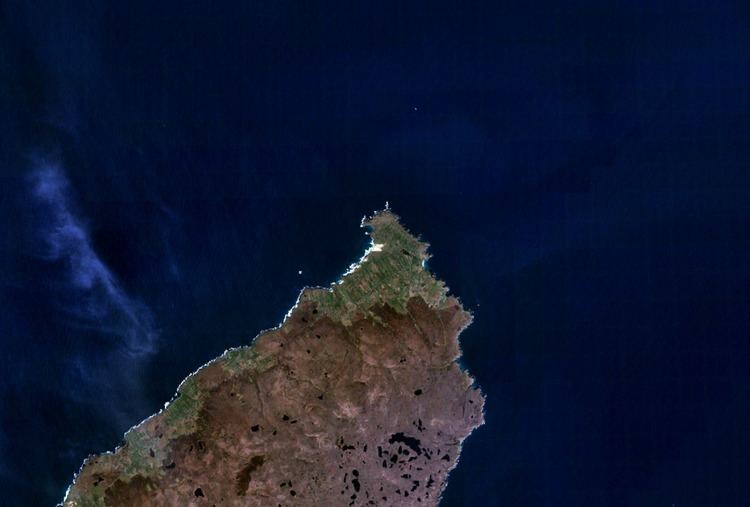Population 1,300 Post town STORNOWAY Civil parish Barvas | OS grid reference NB5261 Lieutenancy area Outer Hebrides | |
 | ||
Weather 10°C, Wind SW at 29 km/h, 73% Humidity | ||
Ness (Scottish Gaelic: Nis) is the northernmost part of the Isle of Lewis, a community consisting of about 16 villages, including Lionel, Habost, Swainbost, Cross, North and South Dell, Cross Skigersta, Skigersta, Eorodale, Adabroc, Port of Ness, Knockaird, Fivepenny and Eoropie. It is the most north-westerly community in the European Union. Its most northerly point is the Butt of Lewis. The name Ness derives from the old Norse for headland and many of the other place names in the area also have a Norse origin.
Contents
Ness is part of the Galson Estate which is owned by Urras Oighreachd Ghabhsainn (Galson Estate Trust) which is managed by 10 local trustees elected by the community. The hand-over took place on 12 January 2007.
Ness is accessible via the A857 road and is about 25 mi (40 km) by road from Stornoway. You can also reach Ness by walking across the moor from North Tolsta in Back to Skigersta. It is about 10 mi (16 km) and takes 6 hours at a leisurely pace.
Scottish Gaelic is the language of the community with 75% being able to speak it. Peat cut from the moor, is used as a fuel for cooking and heating in many homes, but its use is on the decline. The 2001 Census results show a resident population of just under 1,000. In 1831 Ness had a population of just over 3,000.
Landmarks include the 13th-century Teampull Mholuaidh in Eoropie and the small island of Dùn Èistean which is the ancestral home of the Lewis Morrisons, which is now bridged and archaeological excavations have been taking place there.
Each year 10 men from Ness go out to the island of Sula Sgeir in late August for two weeks to harvest around 2,000 young gannets known locally as Guga. The Guga hunt is a Ness tradition and the bird considered a delicacy.
A Ness boat builder called John F. Macleod from Port saved 40 lives following the sinking of the Iolaire by managing to take a line to shore.
Ness is known for its Sgoth, a type of clinker built skiff with a dipping lug sail. The boats were used for line fishing until the early half of the twentieth century. There are several still in active use owned by community trusts which maintain them. and
There is a cultural exchange programme between Ness and Connemara.
School
Lionel School is the school providing for Ness. Lionel School is for primary and S1 and S2 and also has a Gaelic medium unit. Lionel School prides itself on its sporting prowess and pupils have won trophies for football, running, badminton and swimming. The school roll is 116.
The small School at Cross closed in 2011 due to falling rolls, latterly having only 19 pupils. The buildings have now been taken over by the Ness Historical Society.
Sport
Football is the main sport with Ness FC playing their home matches on Fivepenny Machair. 'Spors Nis' is a new (2007) Community Sports Centre with all the modern facilities you would expect including a two lane 10 pin bowling alley. Lionel School also has a swimming pool which is open to the public when not in use by the school.
